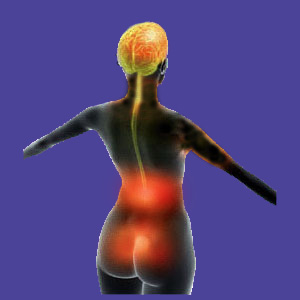
Lower back pain during menstruation is one of the many possible symptoms of your monthly period. Organic chemicals in the body can create many uncomfortable symptoms during menstruation, ranging from minor, occasional expressions to severe, disabling and persistent pains each and every month.
Menstruation-related pain can be effectively treated using a variety of approaches to care. Most women do not have to suffer with severe back pain and other symptomatic tortures, including headaches, stomach cramps, bloating, constipation and digestive disorders recurrently. However, finding the right solution for each woman’s specific needs might take some trial and error.
This patient guide delves into the occurrence of lower back pain due to a woman’s monthly period. We will explore the anatomical changes that occur, as well as provide tips on treating menstrual lower back pain with minimal risk and collateral effects.
Suffering from Lower Back Pain During Menstruation
Monthly periods range in effects from woman to woman and often, from month to month. Some women are very consistent in the fact that they experience specific consequences each month, while others are unpredictable in their menstrual patterns. Some fortunate women do not suffer any major effects during their monthly cycle, while others have acute and debilitating mind and body symptoms that can make life a true torment for up to half of the month… every month. Of course, every possibility in between these extremes is also possible, with some women being moderately predictable in symptoms and most experiencing mild to moderate menstruation-related expressions.
Lower back pain is just one of many possible symptoms of menstruation in the body. When low back discomfort occurs, it usually consists of dull achy pain on both sides of the spine, radiating outward into the postural muscles over the kidneys and downwards into the upper buttocks. Less commonly, women might suffer middle or upper back pain instead of, or in addition to, traditional lower back pain. Some women suffer equally painful expressions in the neck, shoulders and possibly, throughout much of their bodies.
Period-related lower back pain is rarely worsened by position or activity. Instead, it is most often a constant nagging pain that typically defies attempts to relieve it using traditional approaches to lumbar dorsalgia care.
Causes of Lower Back Pain During Your Period
The monthly period is regulated by organic chemicals called hormones that are produced and circulated in a woman’s body. There are several hormones that are associated with menstruation and these chemicals are known to enact particular effects on various types of anatomical tissues. Concurrently, water retention is also a typical consequence of menstruation.
Some organic chemicals tend to cause discomfort in the glands and muscular structures of the lower back, as well as elsewhere in the body. The breasts are often very tender and will usually grow in size, sometimes significantly, during menstruation. This increase in breast mass can contribute to breast size-related back and neck pain.
Women often cite feelings of fatigue during their period. This often translates into poor posture that can aggravate existing reasons for lower back pain.
Women sometimes report poor quality of sleep during menstruation which can take a huge toll on general wellness and contribute to musculoskeletal aches and pains.
The sacroiliac joint changes in response to hormones released during the monthly period. These changes can contribute to transient versions of minor joint dysfunction and instability, as well as exponentially worsened existing problems that might already exist in the joint due to injury, degeneration or child-birth.
Solutions for Lower Back Pain During Menstruation
Most women seek pharmaceutical treatment for relief of monthly period pain and related symptomology. There are several OTC drugs and many prescription drugs that can be taken to minimize the discomfort of menstruation. However, all of these products enact serious negative consequences to the body systemically. Therefore, we tend to recommend that women explore alternative methods of symptomatic reduction that are constructive and do not compromise overall wellness for the sake of minor pain management. This is especially important for women who have consistently severe period symptoms each month, as the collateral effects of drug substances will worsen as the chemicals accumulate in the body over time. The following practices are all superior forms of lower back pain management when compared to drug therapies:
Some herbs will reduce the severity of period discomfort systemically. Fresh herbs are always better than herbal substances that have been made into commercially-available pills or powders.
Biofeedback, meditation and guided imagery are all highly effective mindbody techniques that are proven to reduce the severity of period symptoms. Similarly, working on open and honest communication skills can improve a woman’s mental state during her period.
Limiting foods and beverages that worsen the chemical effects of menstruation is often helpful. Alcohol, salt and fatty foods are bad, while eating iron rich foods is good.
Exercise might seem like the last thing woman want to do when experiencing period pain, but physical activity is shown to decrease the time spent suffering, as well as reduce the severity of symptoms in many patients.
Learn to manage psychoemotional stresses better and do not repress emotions.
Complementary therapies might prove very effective for some women, including chiropractic, massage, reflexology, reiki and even acupuncture for severe manifestations.
Lower Back Pain > Low Back Pain > Lower Back Pain During Menstruation





